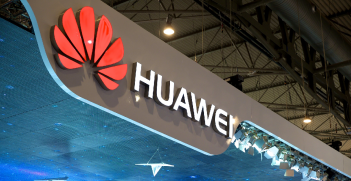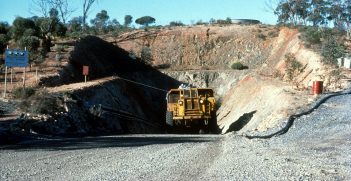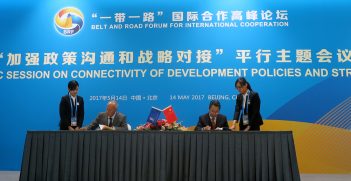Rare Earths, Rare Opportunities: Australia's Crucial Role in the Green Transition

Rare Earth Elements are becoming increasingly important in the world’s green transition. Australia should become a more proactive contributor.
Imagine a world without screens. No laptops, smartphones, or TVs. Imagine a world without electric vehicles, wind turbines or solar panels. Probably, the world our ancestors used to live in is unimaginable to us. All of these products, as well as many other high-tech products, require Rare Earth Elements (REEs). These REEs are 17 elements of the periodic table that can, in fact, be found in many locations all over the world, but only in a few are they found in such abundance that they can be mined. While REEs gained notoriety already in the 1980s, it was probably in 2010 when countries realised their critical relevance and the leverage that countries enjoy that control them. China in the 1980s, worried about their dependence on oil, went ahead of its time in a smart move by ramping up their REEs mining and processing, which allowed them to overtake the United States as the dominant supplier by the late 1990s.
A maritime quarrel in 2010 between Japanese coastguards and a Chinese trawler was followed by China temporarily halting REEs exports to Japan. As China had at that time 97 percent of the market share in the production of REEs, this was a wake-up call not only for the Japanese government but for the entire global community. This was the time when the West realised that such resources gave China tremendous geopolitical power, and that the green revolution required readily available and low-cost REEs. Herein, REEs received the adjective “critical.”
The global community is facing a serious problem and Australia is part of its solution.
Economic and geopolitical significance of rare earth
In 2010, the global reserves of rare earth minerals slightly declined from a peak of 140 million metric tons (mt) to 110 million, with China holding the majority at 44 million mt. The US and others like Vietnam, Russia, and Brazil also maintain significant reserves. Production has since surged to 350,000 mt (2023), highlighting the growing demand for technology and renewable energy solutions.
China’s control over rare earth production and reserves substantially influences international trade, leading other nations to seek diversification and reduced dependency through international cooperation and policy measures. Efforts include strengthening domestic mining sectors and innovation in industries like electric vehicles, and their batteries, to minimise reliance on rare earths. For example, to reduce dependency on REEs and address environmental and supply chain concerns, electric vehicle giant Tesla has announced plans to design future models that will minimise or eliminate the need for REEs.
Australia’s position in the rare earth’s market
Australia has one of the richest REEs deposits in the world in Mount Weld, Western Australia, with high concentrations of neodymium and praseodymium. These two elements are critical to the production of the most efficient and durable types of magnets, sometimes called “supermagnets,” which help to transform mechanical inputs into electric energy (wind turbines for example) and vice-versa (for instance in EVs), as well as for hard-discs and medical devices. While this mining discovery ocurred in the 1970s, mining in Mount Weld did not start until 2011, one year after the global wake-up call on China’s supremacy in REEs. Mount Weld is currently the only site with largescale mining. Other abundant sites are currently being explored such as the location at Browns Ragne, also in Western Australia, which is rich in dysprosium (also needed for supermagnets), or the Nolans Project near Alice Springs, rich in neodymium and praseodymium.
Australia was the third largest producer of REEs with 18,000 mt in 2022 after China (210,000 mt) and the US (43,000 mt), although it is considered to be the fifth largest country in REEs deposits overall. The US, though being the second largest exporter, is considered to have just roughly half of Australia’s deposits. Countries like Vietnam, Brazil, Russia, and India have larger deposits than Australia, but have been unable to set up largescale mining. This shows how costly and time-consuming it is to set up mining facilities, not only from a logistical standpoint, but also in guaranteeing a minimum of environmental safety.
The reason why Australia started mining REEs in 2011 is Japan. Following its 2010 clash with China, and fearing massive losses in their electronic and vehicle manufacturing due to lack of REEs supply, Japan partnered with the Australian Lynus mining company to finance mining at Mount Weld, and set up refining in Malaysia, where most of Australia’s raw ore is exported to. Meanwhile, Malaysia, which has the only refining plant of REEs outside China, has become the top global exporter of refined REEs which is mainly exported to Japan. The proactiveness of the Japanese government is an example of supply chain innovation, illustrating that sanctions can be effectively counteracted if there is public willingness to do so. Interestingly, Japan found a useful associate in Australia, even as most of the product and profit is kept in Japan.
Environmental and social considerations for Australia
REEs production brings significant environmental concerns. Establishing large mining sites requires extensive construction, often leading to deforestation, the loss of wildlife habitats, and decreased biodiversity. Moreover, one of the primary issues with REEs is their association with radioactive elements such as uranium and thorium, which necessitates severe environmental and health safety measures. These radioactive elements, alongside the toxic chemicals used in the extraction process, generate significant risks to human health and the environment, contaminating water, soil, and groundwater.
Besides the environmental impact, REEs production has a multifaceted social impact on local communities and indigenous populations. While REEs can bring economic benefits, such as employment opportunities and regional development investments, the adverse effects on human rights and the environment can significantly harm close communities if not appropriately managed. The largescale operations of the REEs industry not only transform landscapes — by relocating mountains and altering river paths — but also affect the living areas of local and Indigenous communities. For regional and Indigenous peoples, the land is a resource and a religious area integrated into their cultural identity and heritage. The disruption to lands and lifestyles can be particularly severe when these communities are not adequately consulted or informed about REEs mining activities. Moreover, the interactions between Indigenous peoples and the REEs mining sector may inevitably lead to the erosion of Indigenous cultures, territories, and existence.
While Australian mining faces several challenges, Chinese counterparts are often accused of obviating the environmental impact, allowing severe degradation of the mining region, while offering cheap REEs to Chinese industry. Eco-dumping is a major issue in REEs mining, and has yet to be reconciled with the demand for safe and sustainable mining practices in China.
Future prospects and policy recommendations
Given the strategic, political, and industrial significance of RREs, looking at it simply in economic terms is shortsighted. Due to its relevance and massive investment requirements it is clearly an industry that requires strategic government intervention. China realised this long time ago, and Japan more recently. South Korea is realising it now. The US initiated the Minerals Security Partnership in 2022 which includes the European Union, South Korea, and several other Western countries with the aim to secure critical mineral supplies. While Australia is also part of this partnership, the government seems to be reluctant to take a more proactive role in the industry. It would be desirable for Australia’s geopolitical partners, as well as for the country itself, to shift up gears and become a proactive major partner in the quest to achieve a sustainable and peaceful global community, without destroying the planet or triggering wars in the process.
Dr Daniel Borer is a lecturer in management in management in The Business School, University Vietnam.
Dr. Nhung Vu Thi Hong is a lecturer in economics in The Business School, RMIT University Vietnam.
This article is published under a Creative Commons Licence and may be republished with attribution.





